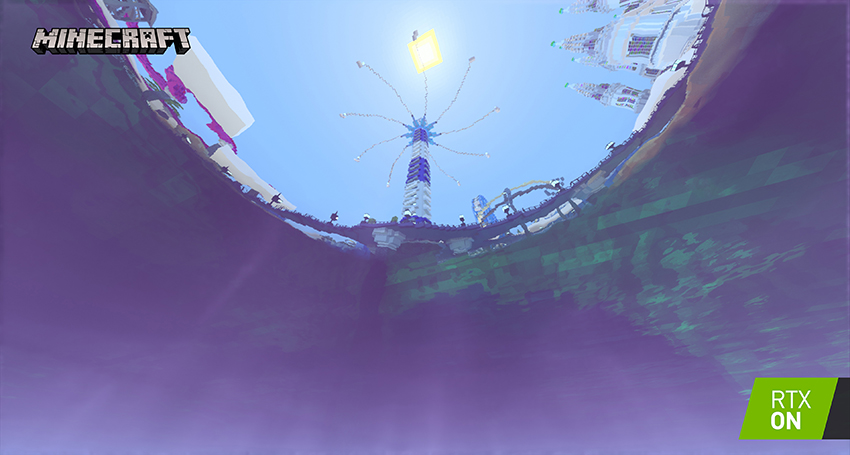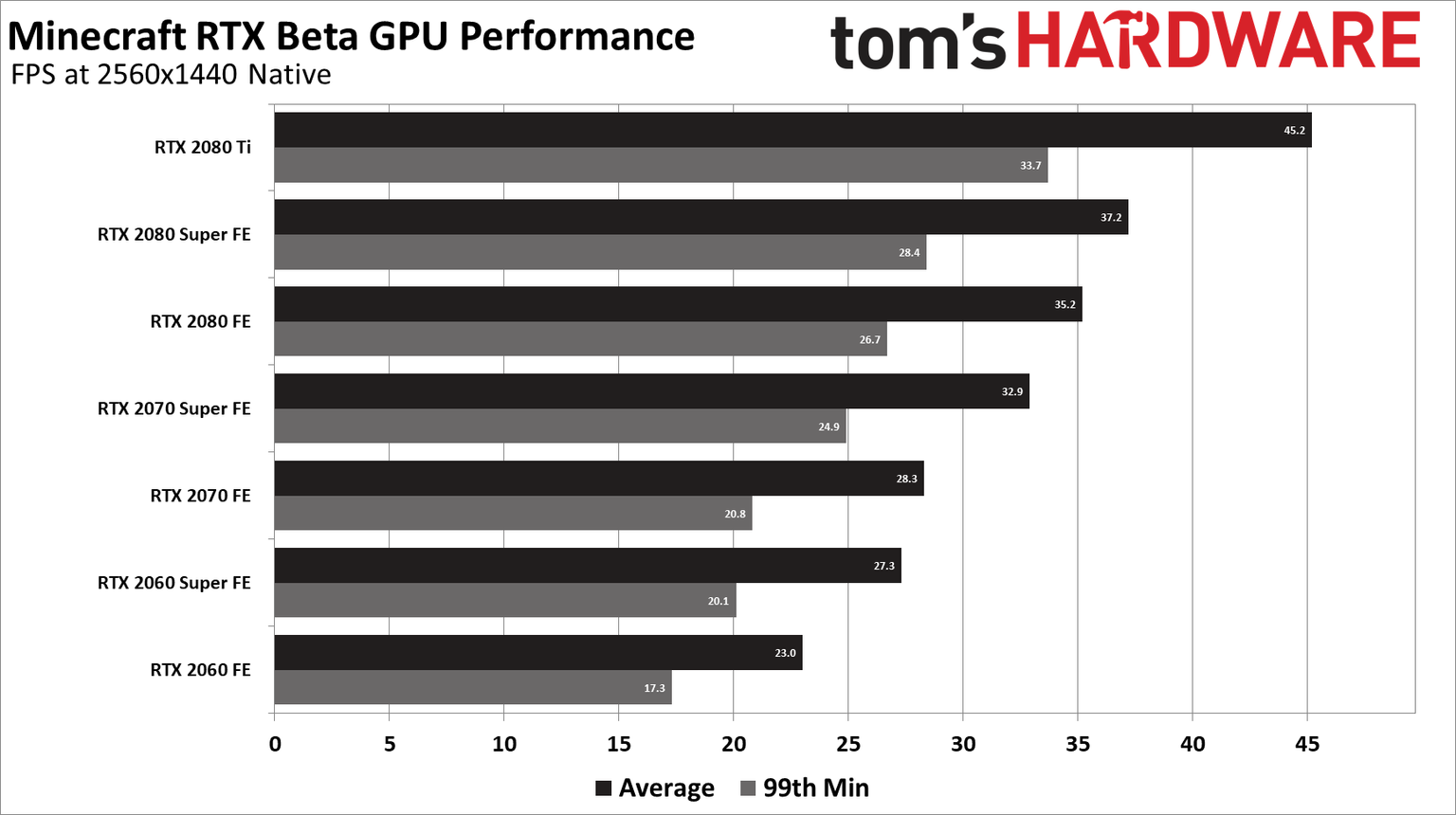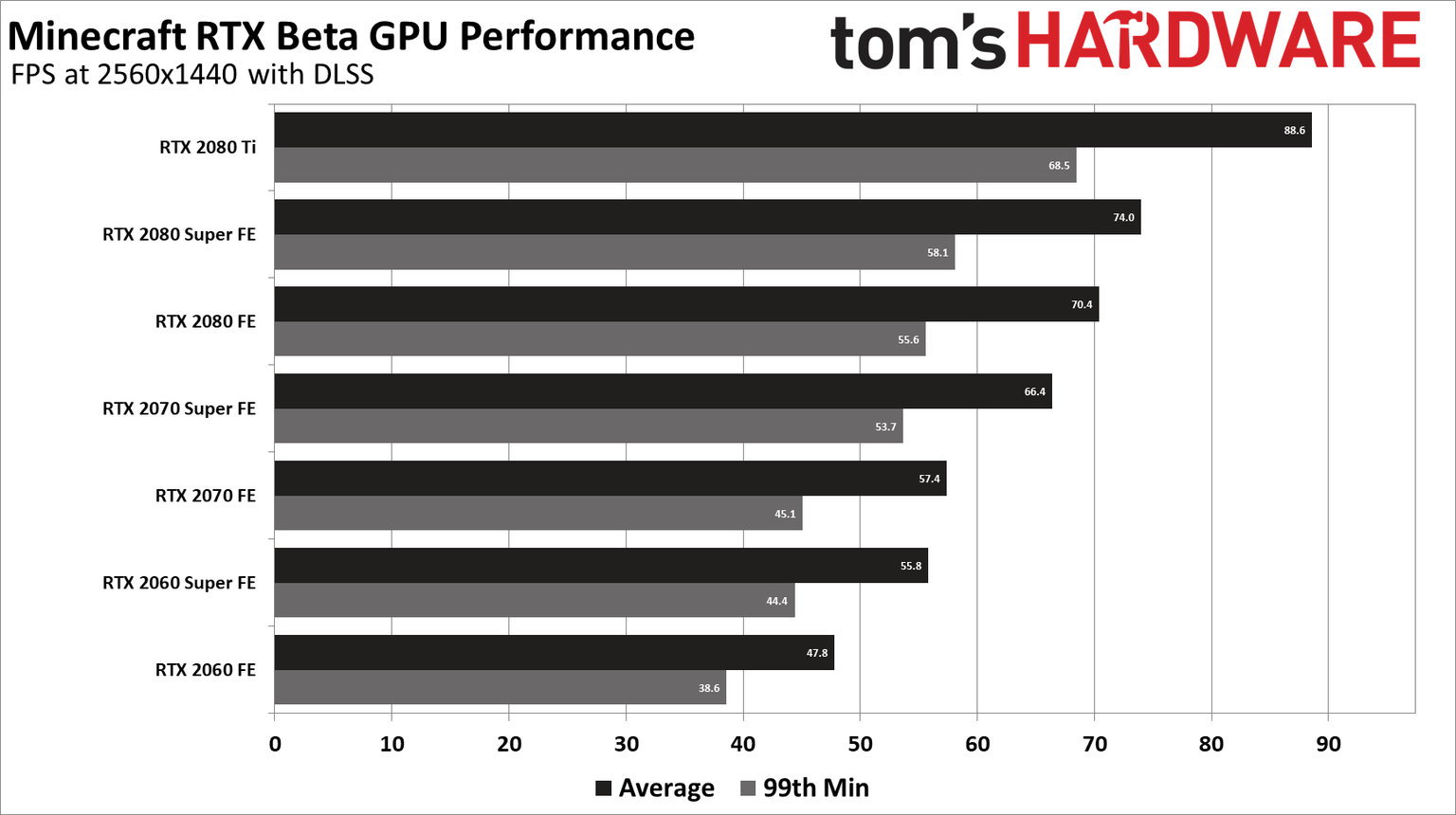Minecraft with RTX’s Path-Traced Effects, In-Depth
As we’ve mentioned,
Minecraft with RTX’s worlds are almost entirely path-traced, with lighting and effects featuring unprecedented levels of detail, for the very best image quality possible. If you yearn to know more, and love to geek out about under the hood tech, here’s a rundown of all the major effects.
Global Illumination
Games are traditionally illuminated by precomputed lightmaps, Image-Based Light Probes, Spherical Harmonics, and Reflective Shadow Maps, plus artist-placed lights to help force illumination where the aforementioned techniques fail. And while the results look great, the techniques used have several shortcomings, the biggest of which being that dynamic lighting fails to bounce or illuminate beyond the area that the light hit.
For example, imagine a dark room with bright light shining through a window. With traditional techniques, everything that is directly hit by the light is illuminated, but the illuminated areas themselves do not bounce light, and do not illuminate surrounding game elements, when in reality they would.
With path tracing, we can accurately model the dynamic indirect diffuse lighting reflected by one or more indirect bounces off of surfaces in the scene, and have it interact and interplay with other ray-traced effects. Imagine, for instance, sunlight beaming into a castle through multicolored stained-glass window blocks, refracting, illuminating all corners of the room, reflecting off the shiny marble floor, and brightening surrounding detail, causing new contact hardening shadows to be cast from objects.
Underground, light beams in, illuminating the darkness, but only to a point - once the light dissipates, make sure you’re carrying a torch or the Creepers will get you! (click to load an interactive RTX ON-OFF comparison)
The results are jaw-dropping, and give us a preview of how all games will eventually be rendered.
Reflections
In
Minecraft with RTX, path tracing adds ray traced reflections throughout each world, allowing us to reflect every detail, every mob and NPC, and every other visual effect, for pixel-perfect reflections. And using the PBR texturing system, we can vary the level of reflectivity on different blocks, allowing for a wide range of looks, giving us perfect mirrors, smooth water-based reflections, and surfaces with rough and coarse reflectivity.
Inside, PBR textures subtly reflect light from wall to wall, further improving image quality and immersion (click to load an interactive RTX ON-OFF comparison)
With path-traced reflections, not only do you see more detail and information, you experience improved lighting, realism, immersion, and visual fidelity.
Shadows
With our unified path tracing lighting model in
Minecraft with RTX, every aspect of each world realistically and naturally casts shadows, and is shaded and darkened by shadows cast upon them. Shadows soften and harden depending on the distance from the shadow caster, mobs, NPCs and new blocks block light and cast new shadows, and newly-placed light sources (torches, illuminated blocks, et cetera) cast new light that creates new dynamic shadows, and affects existing shadows and shading. Most impressive of all, every single leaf in a tree’s leaf block casts its own individual shadow, adding truly wondrous shadow detail to your worlds.
Per-Pixel Emissive Lighting
All torches and light-emitting blocks in
Minecraft with RTX have been upgraded with per pixel emissive lighting. This enables each pixel of these items to emit uniquely colored light that affects their surroundings, best demonstrated by our special disco blocks that display various rainbow colors on an 8x8 grid on each face of each block:
Atmospheric Effects
Path tracing introduces new atmospheric effects to
Minecraft, enabling players to build and experience worlds with mist and fog, illuminated by sunlight and moonlight, or the occasional torch or lantern, as seen in movies.
Transparency Reflection, Refraction and Scattering
As path tracing follows each individual light ray until it dissipates, we can apply immersive and realistic reflection, refraction and scattering to transparencies, such as stained glass, water, and ice. Using these features, you can create ice palaces illuminated exclusively by the sun and moon, and cathedrals with stained glass murals that fill the interior with colored light as the sun beams through.
These naturally occurring effects can noticeably affect your perception when looking through bodies of water:
And we’ve even modelled
Snell’s Window, “a phenomenon by which an underwater viewer sees everything above the surface through a cone of light of width of about 96 degrees. This phenomenon is caused by refraction of light entering water, and is governed by Snell's Law. The area outside Snell's window will either be completely dark or show a reflection of underwater objects by total internal reflection.”
hmmm.. impressive..



